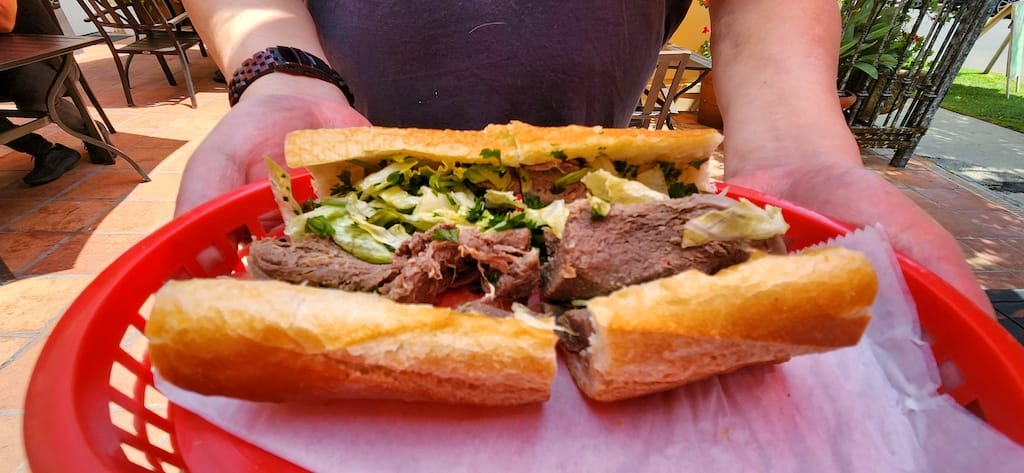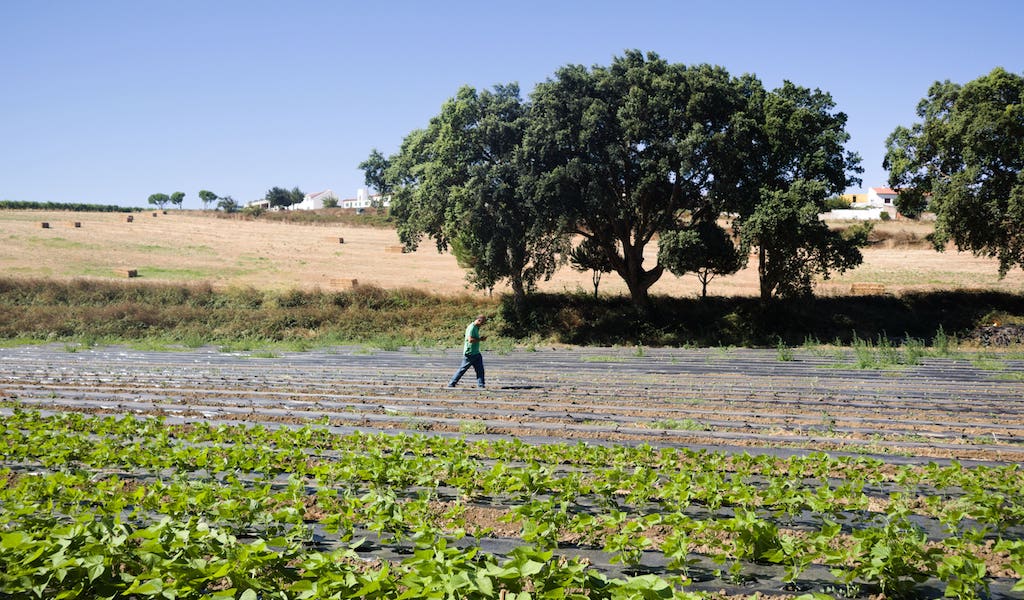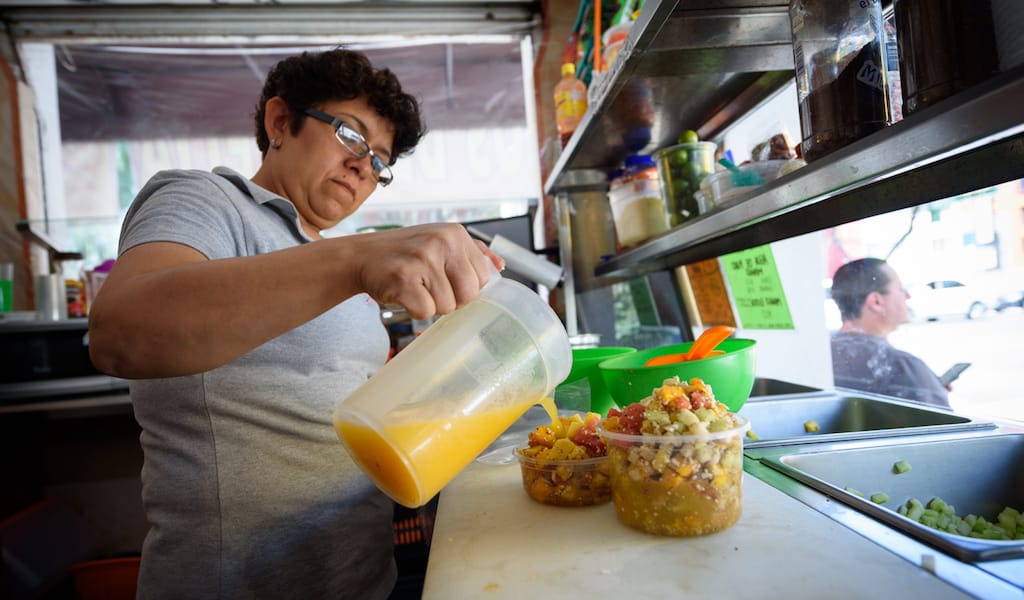To find the entrance to the Attari Sandwich Shop, you need to listen for the sounds of a bubbling fountain and the chatter of groups of people dining. While the official address is on Westwood Boulevard, the entrance is actually around the corner on a side street due to a remodel of the building. There’s a sandwich board sign aiming you in the right direction, but it tends to be blocked by parked cars, so it’s important to keep ears and eyes open.
When you do find it, you will walk through a patinaed gate into a small, inviting courtyard area with the water feature in the center and the smells of food being grilled wafting through the space.
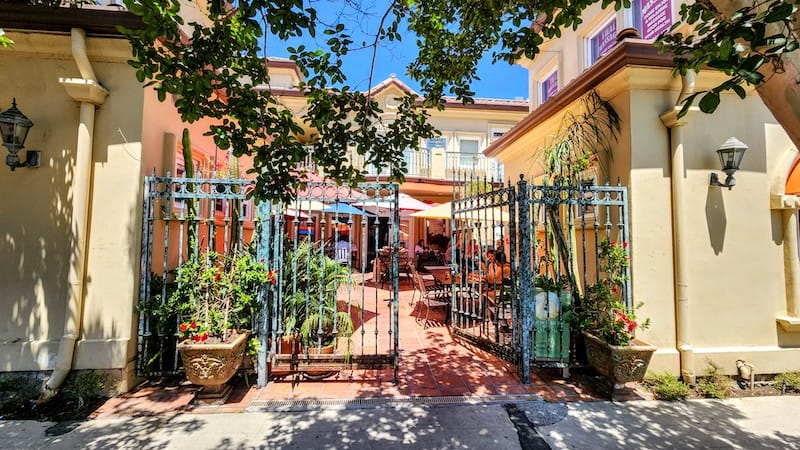
The voices heard may be speaking English but just as likely Farsi, because this is one of the best and most beloved Persian restaurants in West Los Angeles. (To quote the chef Samin Nosrat, Persian is both an ethnicity and a language, also known as Farsi, while Iranian is a nationality. Not all Persians and Persian-speakers are Iranian, and not all Iranians are Persian.)
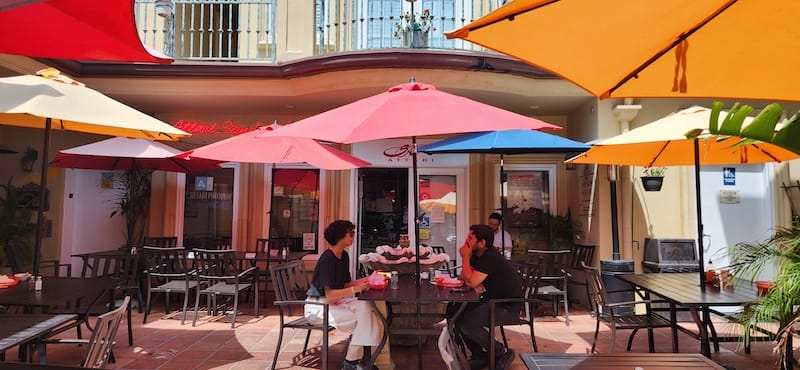
The population of this area is almost cleaved in two. There’s the somewhat transient neighborhood of UCLA students, and the area called “Tehrangeles” by the many Persians who have lived there since a major migration to the West in the late 1970s. The main drag, Westwood Boulevard, runs North to South, and is where to find multiple Persian restaurants, ice cream shops, grocers and general shops. Wilshire Boulevard, running East to West, is home to three of the largest, oldest Sephardic Synagogues in the area, acting as hubs for the large religious community.
One of those people who made the journey was Parvin Sadaghiani, who immigrated to Los Angeles in 1979 and almost immediately opened Attari, a tea and spices shop that sold sundries and small bites to satisfy other newcomers and the curious locals. Growing quickly, within two years she had changed his plans for the business; daughter-in-law Ayla Heravi came on board and the spot morphed into the counter-service place it is today. Using family recipes that feel more home-cooked and less restaurant style, the spot quickly became a hub of Persian life and lunch.
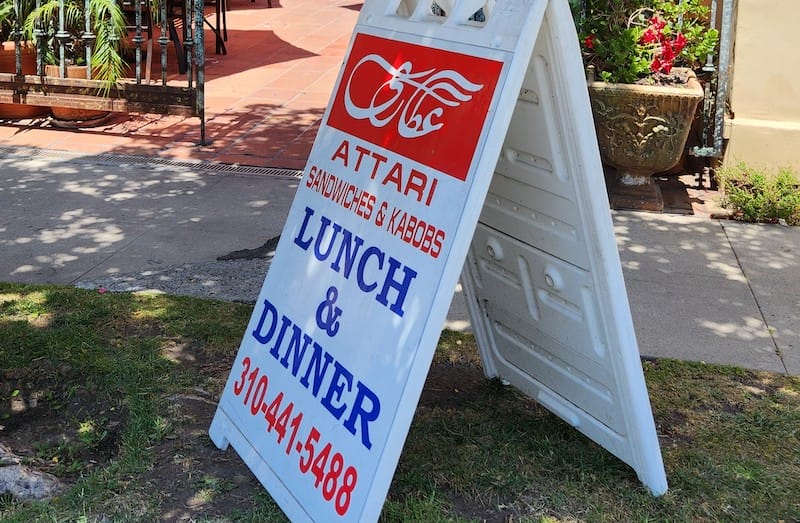
Iranian culture truly embraces food and family, and a visit to Attari feels like a trip to Parvin’s Tehran with old friends. Once you enter the space and navigate to the tiny restaurant counter inside, there will most likely be a line before you can order and get your number. The wait is worth it.
When you’ve decided and paid, quickly find a place to sit while you wait for the food to arrive. On our last visit, every table was full and we were told that due to a backup in the kitchen it would take up to 30 minutes for our sandwich to be ready. It actually took less than 10. We appreciated the heads-up since they were so busy – and they are almost always busy.
Iranian food includes an abundance of herbs, relies on tart and sour flavors from citrus and sumac, and rich earthy notes like saffron, cumin and bold yogurts. Pistachio, honey and rosewater also figure heavily into the ancient cuisine. Attari is renowned for several dishes that use all of those flavors (though not at once) and are heady and easy to love. According to the manager, Mike Basting, who has been there for 25 years, the most-ordered item on the menu is the beef tongue sandwich. “It’s boiled for 12 hours to make it tender,” he tells us proudly. “It’s so good, people come from all over the world to try it.”
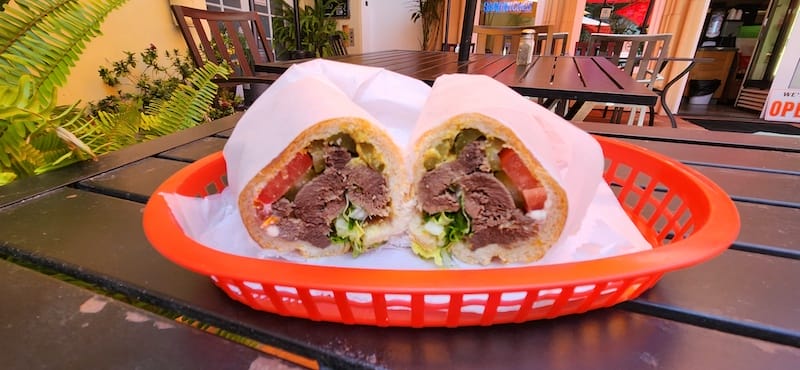
We’ve been eating the sandwich since childhood and can attest it is a local wonder. If you’re used to eating beef tongue at a traditional deli, this is a completely different beast. Served unadorned in a classic oval plastic basket, the two-hander is filled with tender meat that is balanced with umami and beefiness. The sandwich is pretty enormous, so bring a healthy appetite. It sells out so fast you might even want to order it ahead to guarantee availability.
Also on the menu is the hearty, stew-like classic ash reshteh, which is about as filling as a dish can be. It’s made with lots of fresh herbs like cilantro and parsley, and an assortment of Persian beans including kidney and fava, some whole, some mashed. The dish also contains small, chewy wheat noodles – reshteh means noodles – that retain their texture even when ordered for takeout. The large bowlful is topped with dark fried onions, mint oil for a hint of spring, and kashk, which is a cousin of yogurt but a touch more pungent. Parvin kindly includes a side of bread too, so you can sop up every last delicious drop.
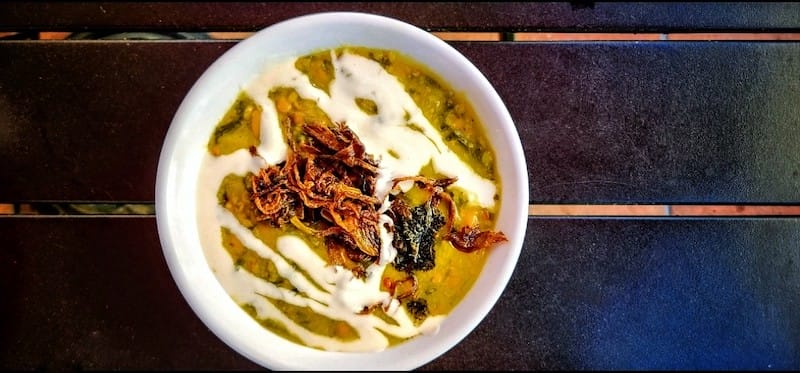
One of the more popular and beautiful dishes is the alluring kuku sabzi. It’s a sort of frittata – a tangle of herbs delicately held together with a whisper of egg, fried, then baked. The golden brown exterior from the grassy olive oil it’s cooked in contrasts wildly with the vivid green interior from the melange of omnipresent fresh cilantro and parsley – in Persian cuisine, very often, herbs symbolize rebirth and health. Sliced thick and served on a grilled baguette, it’s a vegetarian dream.
The go-to dish for many regulars is the extravagant beef (or chicken) koobideh, also known as kabob. It’s ground meat formed into a sausage-like shape, seasoned and grilled to give it a slight char while staying juicy on the inside. Like the other sandwiches, it’s served on a thick piece of baguette-style bread, this time stuffed with fragrant Persian basil, tomatoes and Middle Eastern pickles. They do also offer it as a plate which comes with a side of basmati rice, a plump, flame-kissed tomato and the requisite raw onion slices for those who want a less portable meal.
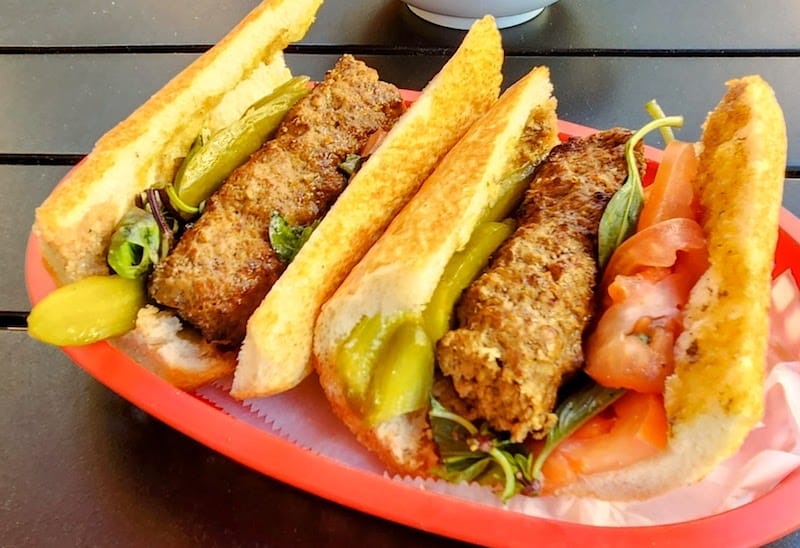
The side dishes, including the torshi – an excellent house-made mixed pickle of cauliflower, carrots and chiles – are all worth a try, adding the perfect extra touch of tanginess to the meal. Every table also has a shaker of dark red sumac which you can add as much of to any dish as you’d like, a little the way you would lemon juice. It’s a classic table touch.
For those looking for something really special, another one of Attari’s in-demand dishes is the lamb brain with turmeric. Served in a hollowed-out 12-inch baguette, the texture is a bit chewy in a very pleasant way, and it’s delicate and mild. The filling is another mix of lettuce, tomatoes, pickles and fragrant herbs.
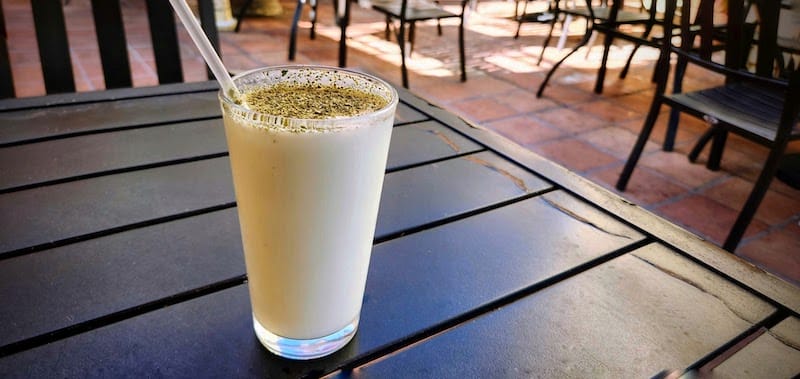
To wash everything down, there’s the lovely cardamom-infused tea or doogh, an iced fizzy yogurt soda made in-house and topped with a generous sprinkle of dried mint. It’s tangy and lively and as refreshing as can be.
The small restaurant also offers catering for large groups and since Persian food travels well, it’s worth looking into for an event, or consider taking a bunch of sandwiches to the beach and making a day of it.
The descriptive menu uses several Farsi words and then explanations in English, making it easy to navigate. Keep in mind that some items are only available on the weekend, so be sure to check before you go. Regardless of what day of the week, it is, Attari Sandwich Shop is our go-to to taste the flavors of a far-away place while feeling right at home.
 September 9, 2020 Projecto Matéria
September 9, 2020 Projecto Matéria
If we had to describe the landscape, idyllic would be the first word to come to mind. […] Posted in Lisbon February 7, 2018 Põe na Quentinha
February 7, 2018 Põe na Quentinha
When it first began five years ago, Põe na Quentinha was an informal get-together for […] Posted in Rio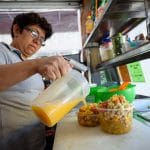 October 26, 2019 La Gaspacheria
October 26, 2019 La Gaspacheria
On sunny afternoons in the sleepy neighborhood of Narvarte, crowds of adults huddle […] Posted in Mexico City
Rachael NarinsRachael Narins
Published on September 22, 2023
Related stories
September 9, 2020
LisbonIf we had to describe the landscape, idyllic would be the first word to come to mind. But while the sunflowers initially command our attention, our eyes soon drift downward, where tomatoes of different shapes and colors, from yellow to red, orange green to black, are growing bigger and ripening. Brothers Miguel and Diogo Neiva…
February 7, 2018
RioWhen it first began five years ago, Põe na Quentinha was an informal get-together for people who were equally passionate about food, beer and samba; they spent the day eating, drinking and dancing in preparation for Carnival. Fast-forward to 2017, when what had now developed into a proper street parade drew in over 5,000 people…
October 26, 2019
Mexico City | By J. Alejandro
Mexico CityOn sunny afternoons in the sleepy neighborhood of Narvarte, crowds of adults huddle around the glass counter at La Gaspacheria, eyes aglow as they consider possible toppings. While the scene evokes children at an ice cream parlor, the ingredients before them strike the uninitiated as a strange mix. Jicama. Hot sauce. Onion. Cheese. Orange juice.…







































